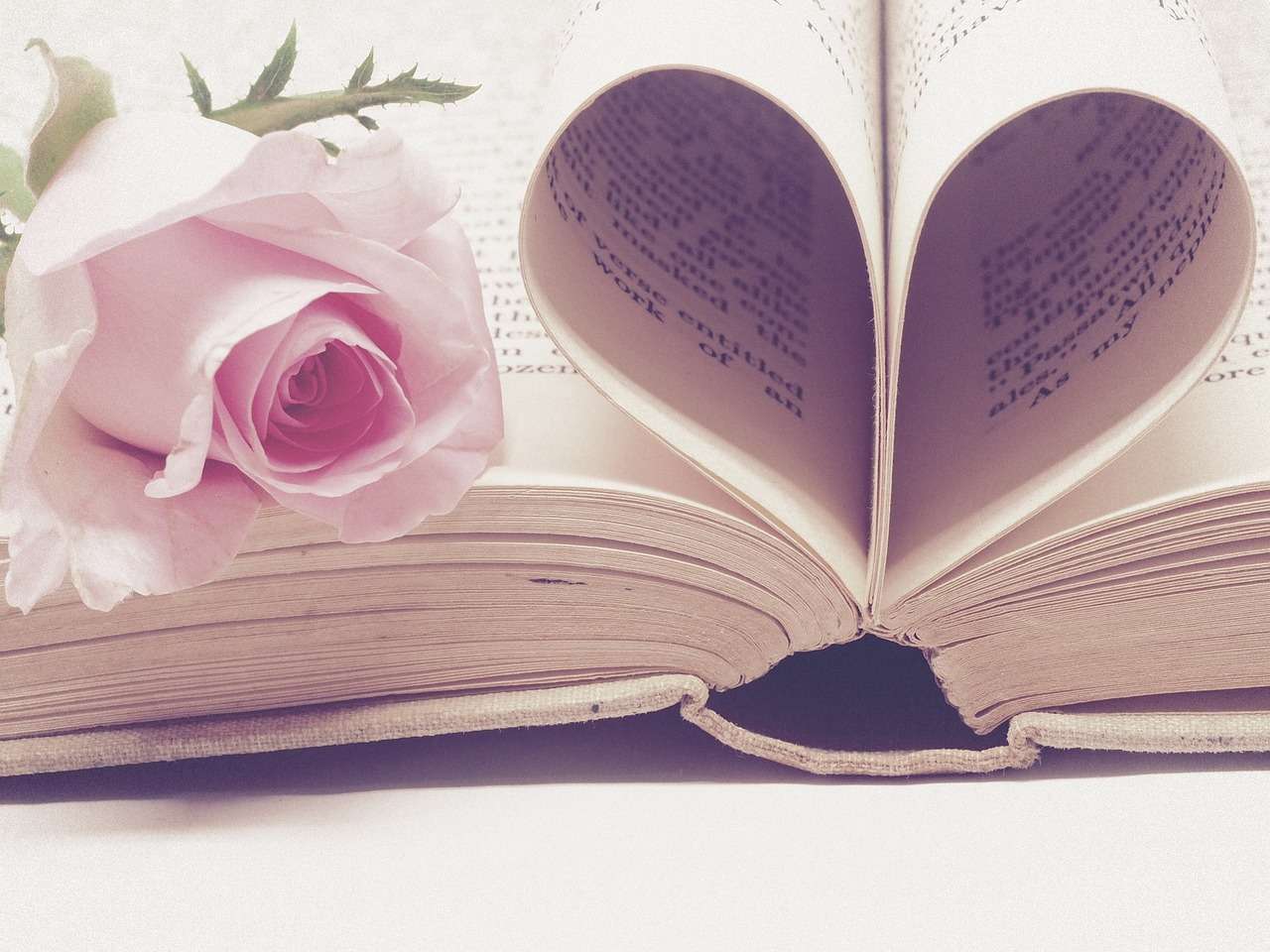Introduction
Chinese culture is a tapestry woven with the threads of ancient myths and folklore that have endured for millennia. From legendary heroes to mythical creatures, these stories have shaped the worldview and traditions of the Chinese people. In this article, we will embark on a captivating journey through the enchanting realm of Chinese myths and folklore, exploring the rich narratives, timeless wisdom, and cultural significance they carry.
The Origins of Chinese Mythology
Chinese mythology is as diverse as the vast country itself. It encompasses a wide array of beliefs, legends, and traditions that have evolved over thousands of years. Let’s delve into the origins of this fascinating mythology.
1. Mythical Beginnings
In ancient China, dating back to a period known as the Warring States (from 475 BCE to 221 BCE), there existed a collection of texts referred to as the “Classic of Mountains and Seas.” These texts are of immense historical and cultural significance as they are considered the earliest documented sources of Chinese mythology. They serve as a crucial foundation for the development of myths and legends in Chinese culture.
The “Classic of Mountains and Seas” is essentially a compendium of knowledge about the natural world, geography, and mythical creatures. It’s like an ancient encyclopedia that not only described the physical aspects of the world, including mountains, rivers, and seas but also delved into the rich tapestry of Chinese mythology. Within its pages, readers would find vivid accounts of fantastical creatures, extraordinary landscapes, and mysterious phenomena.
These mythical creatures mentioned in the texts include dragons, phoenixes, and many other fantastical beings, each with its own unique attributes and symbolism. The geographical wonders described often had mythological significance and were interwoven with stories and legends.
In essence, the “Classic of Mountains and Seas” acted as a repository of knowledge that not only explained the physical world but also provided a fertile ground for the imagination of ancient Chinese storytellers. It was from these ancient texts that many of the iconic figures and themes in Chinese mythology were born, making them an integral part of Chinese culture and history.
2. Influence of Daoism and Confucianism
- Daoism:
- Emphasis on Harmony with Nature: Daoism places a strong emphasis on living in harmony with nature and the natural order of the universe. This perspective has influenced Chinese myths by incorporating themes of balance and the interconnectedness of all things.
- Pursuit of Immortality: Daoism also introduces the concept of seeking immortality or longevity through practices like meditation, alchemy, and herbalism. This pursuit of immortality has given rise to tales of deities, mystical elixirs, and legendary individuals who achieved extraordinary lifespans.
- Confucianism:
- Moral Values and Social Order: Confucianism, on the other hand, focuses on moral values, ethics, and the importance of maintaining social order and harmony. This philosophical tradition has shaped Chinese myths by emphasizing the virtues of loyalty, filial piety, and righteousness.
- Virtuous Heroes and Sages: Confucianism’s emphasis on virtuous conduct and ethical behavior has resulted in the creation of stories featuring heroic figures and sages who exemplify these qualities. These stories serve as moral lessons and reinforce the importance of upholding societal values.
Legendary Figures
3. Pangu: The Cosmic Creator
In Chinese mythology, Pangu is a legendary figure of great importance. He is credited with a remarkable and awe-inspiring feat: the creation of the world itself. Pangu’s story is deeply rooted in the concept of balance and duality, as represented by “yin” and “yang,” which are fundamental concepts in Chinese philosophy and cosmology.
Here’s a more detailed breakdown:
- Pangu’s Significance: Pangu is regarded as one of the most iconic and revered figures in Chinese mythology. His creation story is foundational to the Chinese understanding of how the universe came into existence.
- Creation of the World: According to the myth, Pangu’s actions led to the formation of the world as we know it. He achieved this monumental task by separating two fundamental forces: “yin” and “yang.” These forces are often depicted as complementary opposites, with “yin” representing darkness, passivity, and the feminine, while “yang” represents light, activity, and the masculine.
- Earth and Heavens: As Pangu separated yin and yang, the result was the creation of the Earth (representing yin) and the Heavens (representing yang). This act not only gave birth to the physical realms but also established the balance and harmony between opposing forces, a concept deeply ingrained in Chinese philosophy.
- Symbolism: Pangu’s story holds profound symbolic significance. It illustrates the importance of balance and harmony in the universe. The notion that the world was formed from the interplay of these two opposing forces reflects the Chinese belief in the interconnectedness of all things and the need for equilibrium.
Overall, the story of Pangu serves as a foundational myth that explains the origins of the world and the fundamental principles of balance and harmony in Chinese culture. It showcases how myths in various cultures often carry deep philosophical and cultural meanings, providing insight into the beliefs and values of a society.
4. The Monkey King: Sun Wukong
“The Monkey King: Sun Wukong” refers to one of the most iconic characters in Chinese folklore and literature. Sun Wukong is a central figure in the classic Chinese novel “Journey to the West,” which is one of the Four Great Classical Novels of Chinese literature. This novel, attributed to the Ming Dynasty writer Wu Cheng’en, is a literary masterpiece that tells the epic journey of a Buddhist monk named Xuanzang and his companions as they travel to India in search of sacred Buddhist scriptures.
Sun Wukong, often simply called the Monkey King, is a character of great significance in this story. Here’s a deeper explanation:
1. Mischievous Yet Heroic: Sun Wukong is known for his mischievous and rebellious nature. He possesses incredible magical powers and often uses them to challenge authority figures, including gods and spirits. His mischief can range from playful pranks to outright defiance. However, beneath his mischievous exterior, Sun Wukong is a hero with a strong sense of justice.
2. Legendary Adventures: Throughout the novel, Sun Wukong embarks on a series of incredible adventures. He battles formidable foes, such as demons, monsters, and evil spirits, using his martial prowess and supernatural abilities. Some of his most famous feats include defeating the Dragon Kings of the Seas, acquiring a magical staff known as the “Ruyi Jingu Bang,” and even challenging the Jade Emperor, the highest deity in Chinese mythology.
3. Spirit of Perseverance and Transformation: Sun Wukong’s character embodies the themes of perseverance and transformation. He begins as a stone monkey who gains immortality and tremendous power through Taoist practices. Despite his early arrogance and misdeeds, he learns valuable lessons on his journey and undergoes significant character development. He transforms from a troublemaker into a loyal and noble protector of his master, Xuanzang.
In essence, Sun Wukong is a complex character who combines mischief with heroism, making him a beloved and enduring figure in Chinese folklore. His adventures and personal growth reflect important cultural and moral values, including the idea that individuals can change for the better and find their true purpose through self-discovery and perseverance
Mythical Creatures
5. Dragons: Symbols of Power
In Chinese mythology, dragons are revered and hold a special significance. They are not seen as fearsome creatures to be slayed, as in Western mythology, but rather as symbols of great power, strength, and good fortune. Here’s a more detailed explanation:
- Symbols of Power: Dragons are considered potent symbols of power and authority in Chinese culture. They represent the highest-ranking mythical creatures and are often associated with the emperor, who is seen as the earthly counterpart to the dragon. The dragon’s majestic presence symbolizes the emperor’s sovereignty and leadership.
- Strength: Dragons are typically depicted as formidable and awe-inspiring beings. They are often shown as serpentine creatures with the ability to control water and weather, which underscores their influence over the natural world. This portrayal emphasizes the strength and dominance associated with dragons.
- Good Fortune: Dragons are also closely linked to the concept of good fortune and prosperity. Their presence is believed to bring luck and blessings to those who are worthy. In Chinese culture, the dragon dance, a traditional performance during celebrations like the Chinese New Year, is performed to invoke good fortune for the year ahead.
- Association with Emperors: Throughout Chinese history, emperors have frequently used the dragon as a symbol of their authority. The emperor’s throne, for example, was often referred to as the “Dragon Throne,” and imperial robes featured dragon motifs. This association reinforces the idea that the dragon embodies the ruler’s power and legitimacy.
- Bringers of Prosperity: Dragons are also associated with wealth and prosperity. They are believed to have the ability to bring abundance and success. As a result, dragon imagery is commonly used in various aspects of Chinese life, including architecture, art, and clothing, to attract positive energy and good fortune.
6. The Phoenix: Symbol of Rebirth
In Chinese mythology, the Phoenix is referred to as Fenghuang. It holds a profound symbolic meaning, primarily representing two key concepts: beauty and rebirth.
- Symbol of Beauty: Fenghuang is often associated with unparalleled beauty. Its appearance is described as breathtakingly magnificent, with resplendent feathers in various vibrant colors. This portrayal of the Phoenix as a beautiful creature reflects the Chinese cultural appreciation for aesthetics and the sublime.
- Symbol of Rebirth: The deeper significance of the Phoenix lies in its association with the cycle of life, death, and renewal. According to Chinese belief, the Phoenix is said to die in a burst of flames or self-immolation, and from its ashes, a new Phoenix is born. This cyclic process of death and rebirth mirrors the broader themes of renewal and transformation found in Chinese culture and philosophy.
The Phoenix embodies the idea that life is an ever-repeating cycle, where every end is followed by a new beginning. It serves as a reminder of the resilience of life and the continuous process of regeneration. This concept is deeply rooted in Chinese culture, reflecting a profound respect for the natural order and the inevitability of change.
Folklore and Traditions
7. The Legend of Nian
“The Legend of Nian,” which is a significant story in Chinese culture. Nian is portrayed as a fearsome monster in this legend. According to the story, Nian would emerge from its hiding place every year, typically during the Chinese New Year, to terrorize and devour villagers, especially children.
The interesting part is that the villagers discovered a way to fend off this menacing creature. They realized that Nian was sensitive to loud noises and had an aversion to the color red. To protect themselves from Nian’s annual onslaught, they started using two key elements: fireworks and the color red.
- Fireworks: The loud explosions and crackling noises of fireworks were used to scare Nian away. It was believed that the noise would startle the monster, making it reluctant to approach the villages and allowing the people to celebrate the Chinese New Year in peace.
- The Color Red: Red is considered a symbol of luck, happiness, and good fortune in Chinese culture. The villagers would decorate their homes with red lanterns, posters, and clothing during the New Year celebrations. They also used red firecrackers to create a vibrant and festive atmosphere. This not only added to the joyous spirit of the holiday but was also believed to repel Nian, as the monster was said to be afraid of the color.
So, “The Legend of Nian” explains the origins of these cherished Chinese New Year traditions of using fireworks and the color red to keep the mythical creature at bay. Over time, these customs have become an integral part of the Chinese New Year festivities, symbolizing the triumph of light, happiness, and good fortune over darkness and fear.
8. Ghost Month and Hungry Ghost Festival
In Chinese culture, there is a strong belief in the existence of spirits and ghosts. These supernatural entities are considered to have a connection to the living world, and their actions can impact the lives of humans. To address this belief and show respect for the deceased, the Chinese observe a special period known as “Ghost Month,” which reaches its climax with the “Hungry Ghost Festival.”
- Ghost Month: This is a month-long period, typically falling in August of the lunar calendar, during which Chinese people believe that the gates of the afterlife are opened, allowing spirits and ghosts to roam freely in the human world. It’s a time when the boundaries between the living and the deceased become blurred. People often perform various rituals and ceremonies to honor their ancestors and offer assistance to wandering spirits.
- Hungry Ghost Festival: The Hungry Ghost Festival, which usually occurs on the 15th day of the seventh month of the lunar calendar, marks the pinnacle of Ghost Month. It’s believed that during this day, the spirits of the deceased, especially those who did not receive proper offerings or were forgotten by their living relatives, are most active and hungry for attention. To appease these restless spirits and ensure their goodwill, families and communities come together to make offerings.
These offerings can include food, drinks, and even entertainment such as traditional Chinese opera performances. The purpose is to provide comfort and sustenance to the spirits, ensuring that they do not cause harm or misfortune to the living. It’s also a way for people to express their respect and love for their ancestors and to maintain a harmonious relationship between the realms of the living and the dead.
Modern Relevance
9. The Legend of Mulan
“The Legend of Mulan,” a renowned story in Chinese folklore. This legend revolves around a remarkable woman named Mulan, who displayed immense courage and determination.
Mulan’s story centers on her decision to disguise herself as a man in order to take her father’s place in the army. During ancient China, military service was typically reserved for men, and her father was too old and frail to enlist. To protect her family and serve her country, Mulan took on the identity of a man and joined the army in his stead.
Her journey as a male soldier is filled with challenges and adventures, as she faces the trials of military training and battles while concealing her true identity. Mulan’s dedication, bravery, and loyalty to her family and country make her a beloved character in Chinese culture.
The paragraph also highlights the enduring impact of Mulan’s story. It continues to inspire people worldwide, transcending cultural boundaries. Mulan’s tale of defying societal norms and the odds to achieve her goals resonates with many. It has been adapted into numerous films, books, and works of literature, both within China and internationally.
The legend of Mulan serves as a timeless example of bravery, sacrifice, and the power of determination, making it a cherished part of Chinese folklore and a source of inspiration for people of all backgrounds.
10. The Dragon Boat Festival
The Dragon Boat Festival is a significant and cherished traditional event in China. It typically takes place on the fifth day of the fifth month of the lunar calendar, which usually falls in June on the Gregorian calendar. This festival is celebrated with great enthusiasm and is known for two prominent aspects: dragon boat races and the consumption of zongzi.
Dragon Boat Races: During the Dragon Boat Festival, communities and organizations across China organize dragon boat races. These races involve long, narrow wooden boats adorned with colorful dragon-shaped heads and tails. The boats are usually crewed by teams of rowers, and the objective is to paddle in unison to reach the finish line as quickly as possible. These races are not only thrilling to watch but also carry historical significance.
Zongzi: Zongzi are traditional Chinese sticky rice dumplings. They are typically made by wrapping glutinous rice and various fillings, such as meats, beans, or fruits, in bamboo leaves. The dumplings are then steamed or boiled until the rice becomes tender and aromatic. Zongzi come in various regional flavors and shapes, making them a delightful culinary treat during the festival.
Legend of Qu Yuan: The Dragon Boat Festival has its roots in a legend that dates back over 2,000 years. It is associated with Qu Yuan, a renowned poet and statesman during the Warring States period of ancient China. Qu Yuan was known for his patriotism and loyalty to his homeland. When his country fell into political turmoil, he expressed his despair through his poetry.
As the legend goes, when Qu Yuan learned that his kingdom was conquered by a rival state, he was heartbroken. In his grief and frustration, he waded into the Miluo River and committed suicide. The local people, deeply saddened by his death, raced out in boats to search for him, throwing rice dumplings into the water to feed the fish and prevent them from devouring his body.
The combination of the dragon boat races and the tradition of throwing zongzi into the river to commemorate Qu Yuan’s sacrifice has become a central part of the Dragon Boat Festival. It’s a way for the Chinese people to pay tribute to his patriotism and to celebrate their culture’s resilience and unity in the face of adversity.
Overall, the Dragon Boat Festival is not only a fun and festive occasion but also a cultural tribute to an ancient poet and a reminder of the importance of unity and tradition in Chinese society.
Conclusion
Chinese myths and folklore are a testament to the enduring power of storytelling. They have not only shaped the cultural identity of China but also captivated the imaginations of people around the world. From ancient legends to modern adaptations, these tales continue to resonate with humanity, reminding us of the timeless themes of heroism, transformation, and the enduring quest for harmony.
FAQs
1. Are Chinese myths and folklore still relevant in modern Chinese society?
- Yes, they continue to play a significant role in cultural festivals, art, and literature.
2. What is the significance of the Dragon Boat Festival?
- It commemorates the poet Qu Yuan and involves dragon boat races and traditional rice dumplings.
3. Can you recommend some books or movies based on Chinese mythology?
- Certainly! Some popular choices include “Journey to the West,” “Mulan,” and “The Legend of the White Snake.”
4. How has Chinese mythology influenced other cultures?
- Chinese myths have inspired various Asian cultures and even found their way into Western literature and popular culture.
5. What are some lesser-known Chinese mythical creatures?
- Some lesser-known creatures include the Bai Ze, a mystical beast with seven eyes, and the Jiangshi, a reanimated corpse.



